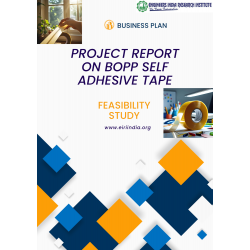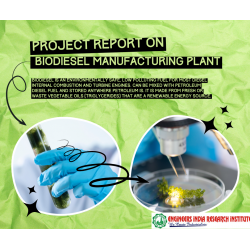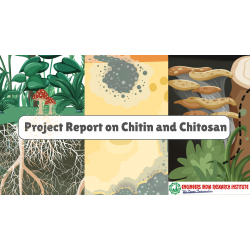Calcined Petroleum Coke (CPC) Production Rate – 24,000 TPA

- More than 40 years of experience
- Managed by expert industrial consultants
- ISO 9001-2015 Certified
- Registered under MSME, UAM No: DL01E0012000
- 24/5 Research Support
Get your quesries resolved from an industry expert. Ask your queries before report or book purchase. - Custom Research Service
Speak to the our consultant to design an exclusive study to serve your research needs. - Quality Assurance
All reports are prepared by highly qualified consultants & verified by a panel of experts. - Information Security
Your personal & confidential information is safe & secure.
CALCINED PETROLEUM COKE (CPC) PRODUCTION RATE – 24,000 TPA
[EIRI/EDPR/4742] J.C.: 2962XL
INTRODUCTION
Coke
Coke is a fuel with few impurities and high carbon content, usually made from coal. It is the solid carbonaceous material derived from destructive distillation of low-ash, low-sulphur bituminous coal. Cokes made from coal are grey, hard, and porous. While coke can be formed naturally, the commonly used form is synthetic. The form known as petroleum coke, or pet coke, is derived from oil refinery coker units or other cracking processes.
Coke is used in preparation of producer gas which is a mixture of carbon monoxide (CO) and nitrogen (N2). Producer gas is produced by passing air over red-hot coke. Coke is also used to manufacture water gas.
Petroleum Coke
Petroleum coke (often abbreviated pet coke or petcoke) is a carbonaceous solid delivered from oil refinery coker units or other cracking processes. Coking processes that can be employed for making petcoke include contact coking, fluid coking, flexicoking and delayed coking. Other coke has traditionally been delivered from coal.
This coke can either be fuel grade (high in sulfur and metals) or anode grade (low in sulfur and metals). The raw coke directly out of the coker is often referred to as green coke. In this context, “green” means unprocessed. The further processing of green coke by calcining in a rotary kiln removes residual volatile hydrocarbons from the coke. The calcined petroleum coke can be further processed in an anode baking oven in order to produce anode coke of the desired shape and physical properties. The anodes are mainly used in the aluminium and steel industry.
The Petroleum Coke category consists of two substances; green coke and calcined coke. These two substances are grouped together in a category based on their similarity of manufacturing processes which results in similar physical chemical characteristics and chemical composition. The principal difference is the amount of residual hydrocarbon (also termed volatile matter) in the two products. Petroleum coke (both green and calcined) is a black-colored solid produced by the high-pressure thermal decomposition of heavy (high boiling) petroleum process streams and residues.
Green coke is the initial product from the cracking and carbonization of the feedstocks to produce a substance with a high carbon-to-hydrogen ratio. Green coke undergoes additional thermal processing to produce calcined coke. The additional processing removes volatile matter and increases the percentage of elemental carbon, which results in a lower potential for toxicity for calcined coke.
The green coke must have sufficiently low metals content in order to be used as anode material. Green coke with these low metals content is referred to as anode grade coke. The green coke with too high metals content will not be calcined and is used for burning. This green coke is called fuel grade coke
Petcoke is over 90 percent carbon and emits 5 to 10 percent more carbon dioxide (CO2) than coal on a per-unit-of-energy basis when it is burned. As petcoke has a higher energy content, petcoke emits between 30 and 80 percent more CO2 than coal per unit of weight. The difference between coal and coke in CO2 production per unit energy produced depends upon the moisture in the coal (increases the CO2 per unit energy — heat of combustion) and volatile hydrocarbon in coal and coke (decrease the CO2 per unit energy).
COST ESTIMATION
Plant Capacity 80 MT/Day
Land & Building (15,470 sq.mt.) Rs. 15.23 Cr
Plant & Machinery Rs. 12.49 Cr
Working Capital for 0.5 Month Rs. 2.78 Cr
Total Capital Investment Rs. 31.43 Cr
Rate of Return 28%
Break Even Point 70%
CONTENTS
ORGANISATION PROFILE
THE REGISTERED OFFICE OF THE COMPANY IS LOCATED AT
THE DIRECTORS OF THE COMPANY ARE
THE PROJECT
REASON FOR SELECTION OF THE PROPOSED SITE
INTRODUCTION
COKE
PETROLEUM COKE
CALCINED PETROLEUM COKE
USES & ITS APPLICATIONS
ANODES
FUEL
GRAPHITE ELECTRODES
APPLICATIONS
ALUMINIUM INDUSTRY:
FERRO ALLOYS INDUSTRY:
FERROUS METALLURGY:
PROPERTIES/SPECIFICATIONS
PHYSICAL PROPERTIES
CHEMICAL PROPERTIES
RAW MATERIAL SPECIFICATIONS
RAW PETROLEUM COKE
BIS SPECIFICATION
RAW MATERIAL SUPPLIER
RAW PETROLEUM COKE
HDPE BAGS
MARKET OVERVIEW
DRIVERS OF THE MARKET
CHALLENGES OF THE MARKET
COVID-19 IMPACT ON THE MARKET
MANUFACTURERS/SUPPLIERS OF CALCINED COKE
INPUT/OUTPUT DATA
COKE CALCINING TECHNOLOGY
ROTARY KILN - BASIC CALCINING PROCESS
HOW IT WORKS
ROTARY KILN
COOLING:
AFTERBURNER:
FLEXIBILITY IN OPERATIONS
PRODUCT STORAGE REQUIREMENTS
LOADING
UNLOADING
DUST AND FIRE PREVENTION
FIRE EXTINGUISHING
EMISSION CONTROL
WET SCRUBBING SYSTEMS
SEMI-DRY SCRUBBING SYSTEMS
DRY SCRUBBING SYSTEMS
BAGHOUSE OPERATION
PROCESSING STEPS
STEP-1: RAW MATERIAL SOURCING:
STEP-2: STORAGE:
STEP-3: MIXING:
STEP-4: CALCINATION:
STEP-5: OPERATION CONTROL AND REVIEW:
STEP-6: STORAGE OF CPC:
STEP-7: PACKAGING:
MANUFACTURING PROCESS
TECHNOLOGICAL DEVICES AND EQUIPMENT:
PROCESS FLOW
FIRE PROTECTION
RAINWATER HARVESTING SYSTEM
ENVIRONMENT MANAGEMENT PLAN
THE AREAS, BROADLY, TO BE ADDRESSED ARE
PLANT & MACHINERY SUPPLIERS/TURNKEY
COKE CALCINATION PLANT
ROTARY KILN
CRUSHING PLANT
BALL MILL
EOT CRANE
POWER TRANSFORMER
ELECTRICAL PANEL
COOLING TOWER
EFFLUENT TREATMENT PLANT
AIR POLLUTION CONTROL EQUIPMENTS
AIR CONDITIONING EQUIPMENTS
AIR COMPRESSORS
PLATFORM WEIGHING MACHINE
MATERIAL HANDLING EQUIPMENTS
FIRE FIGHTING EQUIPMENTS
JIGS AND FIXTURE
SUBMERSIBLE WATER PUMP
DCS SYSTEM
ENGINEERING DESIGN CONSIDERATIONS
ETP FACILITY
ETP FLOW DIAGRAM (TYPICAL)
STP FLOW DIAGRAM (TYPICAL)
SEWAGE AND WASTE WATER EFFLUENT
UTILITIES REQUIREMENT (ESTIMATED - MONTH)
WASTE GENERATION & MANAGEMENT/GREEN BELT
GREEN BELT
PLANT & MACHINERY
PRINCIPLES OF PLANT LAYOUT
MAJOR PROVISIONS IN ROAD PLANNING FOR MULTIPURPOSE SERVICE ARE:
PLANT LOCATION FACTORS
PRIMARY FACTORS
RAW-MATERIAL SUPPLY:
MARKETS:
POWER AND FUEL SUPPLY:
WATER SUPPLY:
CLIMATE:
TRANSPORTATION:
WASTE DISPOSAL:
LABOR:
REGULATORY LAWS:
TAXES:
SITE CHARACTERISTICS:
COMMUNITY FACTORS:
FLOOD AND FIRE CONTROL:
HEALTH SAFETY AND ENVIRONMENT
ANTICIPATED ENVIRONMENTAL IMPACTS
CONSTRUCTION PHASE
OPERATION PHASE
HSE REQUIREMENT
SAFETY DATA SHEETS
ENVIRONMENTAL/SAFETY LIABILITY AND ENVIRONMENT CLEARANCE PROCESS
ENVIRONMENTAL IMPACT ASSESSMENT - TOR
A) LOCATIONAL DETAILS
B) PROJECT RELATED ACTIVITIES
A) ENVIRONMENTAL BASELINE DATA GENERATION
B) METEOROLOGY
C) AMBIENT ENVIRONMENT
D) NOISE ENVIRONMENT
E) WATER ENVIRONMENT
A) LAND ENVIRONMENT
THE FOLLOWING AREAS WILL BE COVERED PERTAINING TO LAND ENVIRONMENT
B) SOCIO ECONOMY
C) IDENTIFICATION & QUANTIFICATION OF ENVIRONMENTAL IMPACTS
AIR ENVIRONMENT
NOISE ENVIRONMENT
WATER, LAND, BIOLOGICAL AND SOCIO-ECONOMIC ENVIRONMENTS
WATER ENVIRONMENT
LAND ENVIRONMENT
SOCIO-ECONOMIC ENVIRONMENT
A) FORMULATION OF ENVIRONMENTAL MANAGEMENT PLAN
ENVIRONMENTAL MANAGEMENT PLAN DURING CONSTRUCTION PHASE
ENVIRONMENTAL MANAGEMENT PLANT – OPERATIONAL PHASE
A) DISASTER MANAGEMENT PLAN
B) ENTREPRENEUR SOCIAL COMMITMENT
C) SUMMARY &CONCLUSION
POTENTIAL RISKS
ONSITE EMERGENCY RESPONSE
SOCIO-ECONOMIC BENEFIT
PROPOSED IMPLEMENTATION SCHEDULE
ENGINEERING PACKAGE/DOCUMENTS
BASIS – PROJECT ECONOMICS
PROJECT FINANCIALS
BASIS & PRESUMPTIONS (FOR PROFITABILITY WORKINGS)
PRELIMINARY LAYOUT
CONCLUSIONS
APPENDIX – A:
01. PLANT ECONOMICS
02. LAND & BUILDING
03. PLANT AND MACHINERY
04. OTHER FIXED ASSESTS
05. FIXED CAPITAL
06. RAW MATERIAL
07. SALARY AND WAGES
08. UTILITIES AND OVERHEADS
09. TOTAL WORKING CAPITAL
10. TOTAL CAPITAL INVESTMENT
11. COST OF PRODUCTION
12. TURN OVER/ANNUM
13. BREAK EVEN POINT
14. RESOURCES FOR FINANCE
15. INSTALMENT PAYABLE IN 5 YEARS
16. DEPRECIATION CHART FOR 5 YEARS
17. PROFIT ANALYSIS FOR 5 YEARS
18. PROJECTED BALANCE SHEET FOR (5 YEARS)
How to Make Project Report?
Detailed Project Report (DPR) includes Present Market Position and Expected Future Demand, Technology, Manufacturing Process, Investment Opportunity, Plant Economics and Project Financials. comprehensive analysis from industry covering detailed reporting and evaluates the position of the industry by providing insights to the SWOT analysis of the industry.
Each report include Plant Capacity, requirement of Land & Building, Plant & Machinery, Flow Sheet Diagram, Raw Materials detail with suppliers list, Total Capital Investment along with detailed calculation on Rate of Return, Break-Even Analysis and Profitability Analysis. The report also provides a birds eye view of the global industry with details on projected market size and then progresses to evaluate the industry in detail.
We can prepare detailed project report on any industry as per your requirement.
We can also modify the project capacity and project cost as per your requirement. If you are planning to start a business, contact us today.
Detailed Project Report (DPR) gives you access to decisive data such as:
- Market growth drivers
- Factors limiting market growth
- Current market trends
- Market structure
- Key highlights
Overview of key market forces propelling and restraining market growth:
- Up-to-date analyses of market trends and technological improvements
- Pin-point analyses of market competition dynamics to offer you a competitive edge major competitors
- An array of graphics, BEP analysis of major industry segments
- Detailed analyses of industry trends
- A well-defined technological growth with an impact-analysis
- A clear understanding of the competitive landscape and key product segments
Need Customized Project Report?
- Ask for FREE project related details with our consultant/industry expert.
- Share your specific research requirements for customized project report.
- Request for due diligence and consumer centric studies.
- Still haven't found what you're looking for? Speak to our Custom Research Team
About Engineers India Research Institute:
Note: We can also prepare project report on any subject based on your requirement and country. If you need, we can modify the project capacity and project cost based on your requirement.
Our Clients

Our Approach
- Our research reports comprehensively cover Indian markets (can be modified as per your country), present investigation, standpoint and gauge for a time of five years*.
- The market conjectures are produced on the premise of optional research and are cross-accepted through associations with the business players
- We use dependable wellsprings of data and databases. What's more, data from such sources is handled by us and incorporated into the report
Why buy EIRI reports?
- Our project reports include detailed analysis that help to get industry Present Market Position and Expected Future Demand.
- Offer real analysis driving variables for the business and most recent business sector patterns in the business
- This report comprehends the present status of the business by clarifying a complete SWOT examination and investigation of the interest supply circumstance
- Report gives investigation and top to bottom money related correlation of real players/competitors
- The report gives gauges of key parameters which foresees the business execution
























